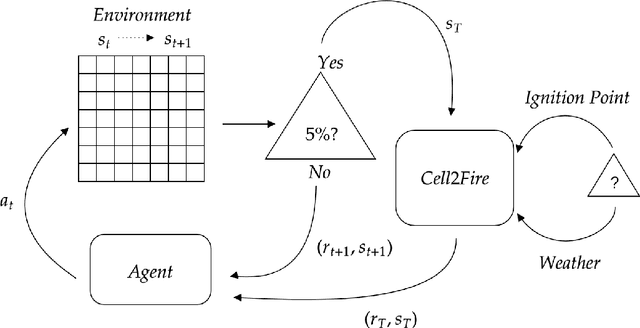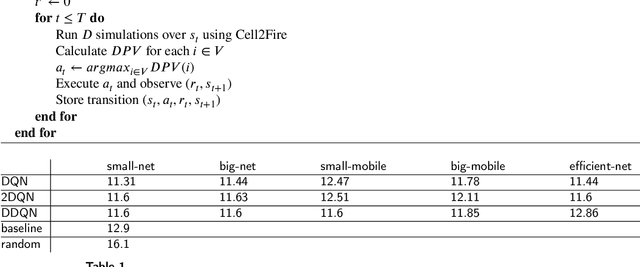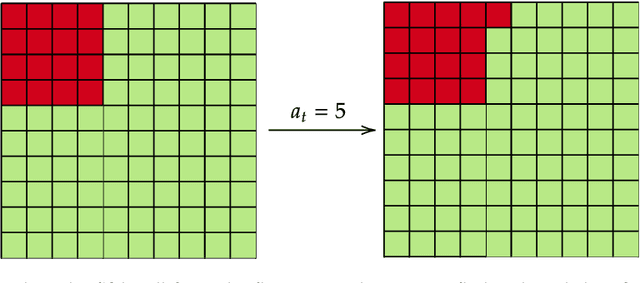José Ramón González
Advancing Forest Fire Prevention: Deep Reinforcement Learning for Effective Firebreak Placement
Apr 12, 2024



Abstract:Over the past decades, the increase in both frequency and intensity of large-scale wildfires due to climate change has emerged as a significant natural threat. The pressing need to design resilient landscapes capable of withstanding such disasters has become paramount, requiring the development of advanced decision-support tools. Existing methodologies, including Mixed Integer Programming, Stochastic Optimization, and Network Theory, have proven effective but are hindered by computational demands, limiting their applicability. In response to this challenge, we propose using artificial intelligence techniques, specifically Deep Reinforcement Learning, to address the complex problem of firebreak placement in the landscape. We employ value-function based approaches like Deep Q-Learning, Double Deep Q-Learning, and Dueling Double Deep Q-Learning. Utilizing the Cell2Fire fire spread simulator combined with Convolutional Neural Networks, we have successfully implemented a computational agent capable of learning firebreak locations within a forest environment, achieving good results. Furthermore, we incorporate a pre-training loop, initially teaching our agent to mimic a heuristic-based algorithm and observe that it consistently exceeds the performance of these solutions. Our findings underscore the immense potential of Deep Reinforcement Learning for operational research challenges, especially in fire prevention. Our approach demonstrates convergence with highly favorable results in problem instances as large as 40 x 40 cells, marking a significant milestone in applying Reinforcement Learning to this critical issue. To the best of our knowledge, this study represents a pioneering effort in using Reinforcement Learning to address the aforementioned problem, offering promising perspectives in fire prevention and landscape management
 Add to Chrome
Add to Chrome Add to Firefox
Add to Firefox Add to Edge
Add to Edge